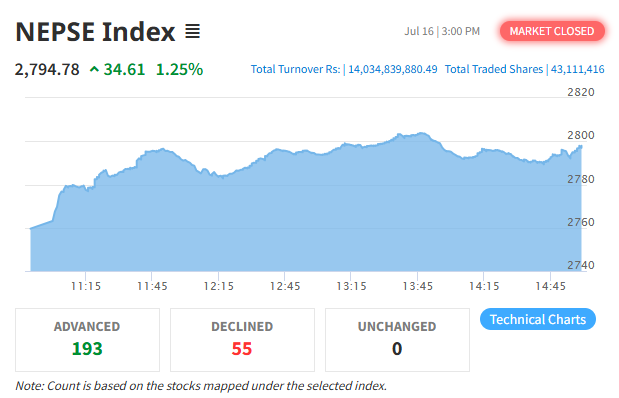--By Sanjeev Sharma
Nepal is among the world’s top 20 fragile countries to receive official development assistance (ODA) from multilateral and bilateral donors, according to a new OECD report. The report entitled ‘Fragile States 2014: Domestic Revenue Mobilisation’ informs that Nepal received USD 892 million in ODA in 2011. The report prepared by OECD’s Development Assistance Committee (DAC) totalled the country’s net ODA atUSD 8.17 billion from 2000-2011. ODA per capita in Nepal was recorded at USD 29 in 2011.
The report has characterised 51 countries (both LDCs and non-LDCs) as the fragile states that are unable to meet their population’s expectations or manage changes in expectations and capacity through the political process. According to OECD, ODA to fragile states declined to USD 53.40 billion in 2011 from record high of USD 67.35 billion in 2005. “Aid has declined by 2.4 per cent in 2011 and will continue its downward trend,” says the report.”Meanwhile, the share of the world’s poor found in fragile states is set to rise to a half by 2018.”
These countries saw a total inflow of ODA at USD 547.19 billion from 2000-2011. Among 51 countries, Afghanistan was the highest recipient, receiving net ODA of USD 45.43 billion from 2000-2011. The war-ravaged country saw significant increase in foreign financial and technical assistance after the fall of Taliban regime in 2001. Pakistan also received note worthy amount of ODA over the last decade with USD 28.51 billion being allocated to it. Bangladesh and Sri Lanka, meanwhile, acknowledged net ODA of USD 19.76 billion and USD 9.02 billion respectively. OECD listed Afghanistan, Democratic Republic of Congo, Ethiopia, Pakistan and Kenya as the top five fragile ODA recipients in 2011. Similarly, the global economic body noted United States, European Union, International Development Association (IDA), United Kingdom and Japan as the top five ODA providers to fragile states in 2011.
The report informed that Nepal received a net country programmable aid (CPA) of USD 10.25 billion from 2000-2013. Similarly, OECD’s outlook projected that the country will receive USD 3.08 billion in CPA during 2014-2016. However, aid inflow in Nepal is seen fluctuating as the country witnessed a 5 per cent decline in CPA in 2010-2011. In 2008-2009 Nepal observed a sharp rise in CPA by 32 per cent followed by a 1 per cent increase in 2009-2010.
“Donors doing too little to strengthen domestic revenues in fragile states”
The report warns international donors that they are not doing enough to help fragile states increase their domestic revenue stating that only a tiny fraction of development aid goes into programmes aimed at improving tax collection. The report finds that just 0.07 per cent of ODA to fragile states is directed towards building accountable tax systems. “Donors pledged as far back as 2002 to make it a priority to help poor countries mobilise more domestic revenues. Yet fragile states still collect less than 14 per cent of their gross domestic product (GDP) in taxes on average, well below the 20 per cent level considered necessary to meet poverty goals,” states the report.
According to the report, Afghanistan has received by far the most support in this area, notably from the International Development Association (IDA) for trade facilitation and from the US for public financial management. Haiti and Nepal remained next in line to receive this aid. “Haiti mainly benefitted from US technical assistancefor public financial management, while Korean aid inNepal helped modernise the customs system, and Germany and Denmark supported its revenue and tax administration,” says the report.













